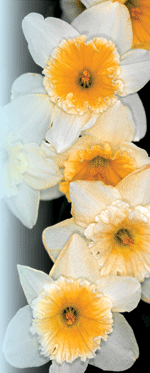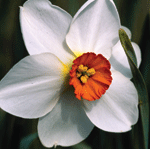A Host of Lovely Daffodils
go.ncsu.edu/readext?234396
en Español / em Português
El inglés es el idioma de control de esta página. En la medida en que haya algún conflicto entre la traducción al inglés y la traducción, el inglés prevalece.
Al hacer clic en el enlace de traducción se activa un servicio de traducción gratuito para convertir la página al español. Al igual que con cualquier traducción por Internet, la conversión no es sensible al contexto y puede que no traduzca el texto en su significado original. NC State Extension no garantiza la exactitud del texto traducido. Por favor, tenga en cuenta que algunas aplicaciones y/o servicios pueden no funcionar como se espera cuando se traducen.
Português
Inglês é o idioma de controle desta página. Na medida que haja algum conflito entre o texto original em Inglês e a tradução, o Inglês prevalece.
Ao clicar no link de tradução, um serviço gratuito de tradução será ativado para converter a página para o Português. Como em qualquer tradução pela internet, a conversão não é sensivel ao contexto e pode não ocorrer a tradução para o significado orginal. O serviço de Extensão da Carolina do Norte (NC State Extension) não garante a exatidão do texto traduzido. Por favor, observe que algumas funções ou serviços podem não funcionar como esperado após a tradução.
English
English is the controlling language of this page. To the extent there is any conflict between the English text and the translation, English controls.
Clicking on the translation link activates a free translation service to convert the page to Spanish. As with any Internet translation, the conversion is not context-sensitive and may not translate the text to its original meaning. NC State Extension does not guarantee the accuracy of the translated text. Please note that some applications and/or services may not function as expected when translated.
Collapse ▲
Narcissus ‘Ice Follies’
Dennis Werner ©
A host of golden daffodils tossing their heads in sprightly dance, as William Wordsworth’s poem describes them, is truly one of the delights of spring. And even though gardeners seem divided on what to call these beauties—daffodil, jonquil or paperwhite—one thing they can agree on is that these plants in the Narcissus family are timeless, elegant classics enjoyed by both the novice and experienced gardener alike.
The charm of Narcissus is its flower shape, consisting of an outer perianth and an inner corona or trumpet. Single-colored cultivars range from the creamy white of ‘Mount Hood’ to the golden yellow of ‘King Alfred’ and ‘Dutch Master.’ ‘Ice Follies’ is a popular bicolor, with a white perianth and ruffled yellow trumpet. Even more spectacular are the orange trumpeted bi-colors such as ‘Barrett Browning.’ Don’t forget double blossoms such as ‘Yellow Cheerfulness’, or miniatures such as ‘Minnow’, which stands only 10 inches tall with multiple blossoms per stem. The variety is endless—I got to 75 in the JC Raulston Arboretum database before I stopped counting—though unproven cultivars should be tested in your garden on a limited scale.

Narcissus ‘Cantabile’
Dennis Werner ©
Time of flowering varies greatly among cultivars and presents gardeners with the opportunity to have a continuously blooming daffodil bed from December through March. What could be a more cheerful addition to the winter landscape?
Full to partial sunlight is best. The blossoms generally will turn to face the sun. Make use of companion plants to keep the bed interesting through summer. Don’t cut the foliage back until it has faded, which leaves the bed a bit messy.
When flowering performance wanes, it’s time to divide. Just as the foliage fades is the best time. Share extra bulbs with friends or plant into a new bed. A soil test will tell you which nutrients to add, though in general any slow-release garden fertilizer should suffice.
The paperwhite cultivars, not hardy in North Carolina, are popular for indoor forcing.
Paul McKenzie


